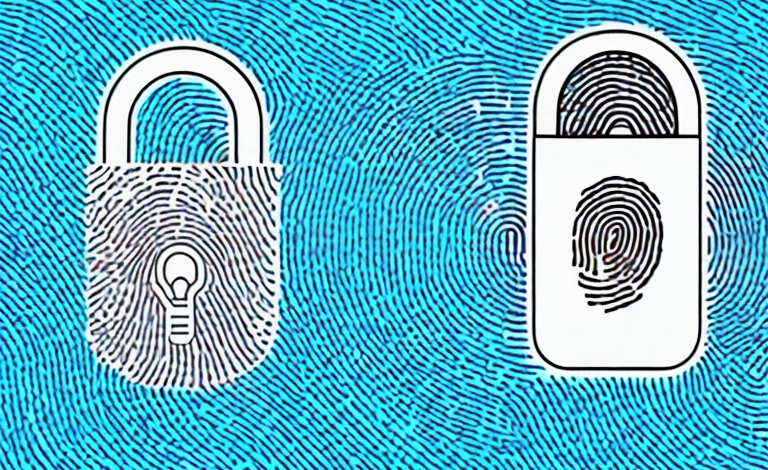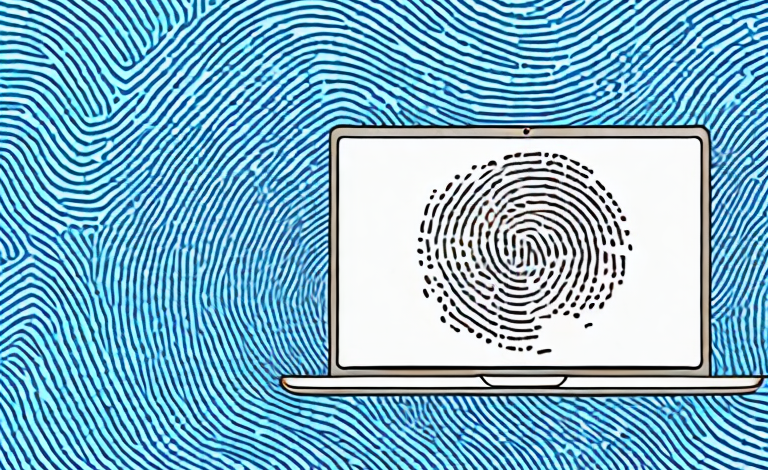Fingerprint identification technology, commonly known as fingerprint ID, has become an increasingly popular authentication method in recent years. From unlocking smartphones to accessing secure areas, this technology has made it easier and more convenient for people to prove their identity. However, as with any technology, there are questions surrounding its reliability, accuracy, and potential risks. In this article, we will explore the ins-and-outs of fingerprint ID, its effectiveness, and its potential vulnerabilities.
Understanding the mechanism of fingerprint ID technology
Fingerprint ID is based on the unique patterns that our fingertips leave behind. The technology uses a scanner to capture the details of the ridges and valleys on our fingertips, creating an encrypted digital file that serves as a “fingerprint” of sorts. When we attempt to unlock a device, the scanner compares the fingerprint on file with the one being presented in real-time. If there’s a match, access is granted. If not, access is denied. This makes fingerprint ID a secure and reliable means of authentication.
One of the advantages of fingerprint ID technology is that it is difficult to replicate. Unlike passwords or PINs, which can be easily forgotten or shared, fingerprints are unique to each individual and cannot be easily duplicated. This makes fingerprint ID a popular choice for securing sensitive information, such as banking or medical records.
However, there are also some limitations to fingerprint ID technology. For example, if a person’s fingerprints are damaged or altered due to injury or certain medical conditions, the scanner may not be able to recognize them. Additionally, there have been concerns about the security of fingerprint data, as it can potentially be hacked or stolen. As with any technology, it is important to weigh the benefits and risks before deciding whether to use fingerprint ID as a means of authentication.
The accuracy of fingerprint identification
The accuracy of fingerprint ID technology is impressive, as it can detect even the slightest differences in a person’s fingerprint. Some of the latest scanners on the market can detect up to 1,000 different data points on a person’s fingertip, making it nearly impossible for anyone to replicate or fake a fingerprint. Additionally, fingerprint ID scanners are very difficult to trick, even with objects like silicone molds or fake fingerprints. This high level of accuracy makes fingerprint ID one of the most reliable authentication methods available today.
Another advantage of fingerprint identification is its speed and convenience. With just a touch of a finger, a person can quickly and easily access their device or account without the need for passwords or PINs. This not only saves time but also eliminates the risk of forgetting or losing passwords.
Furthermore, fingerprint identification is becoming increasingly popular in various industries, such as healthcare and finance, as it provides an extra layer of security for sensitive information. For example, medical professionals can use fingerprint scanners to access patient records, ensuring that only authorized personnel can view confidential information. Similarly, banks can use fingerprint ID to verify the identity of customers and prevent fraud.
Pros and cons of using fingerprint ID on smartphones
Fingerprint ID has become a common feature on smartphones, allowing users to unlock their devices with a simple touch of their fingertip. One of the main advantages of fingerprint ID is convenience – it eliminates the need to remember a password or PIN code to unlock your device. Additionally, fingerprint ID is much faster than typing in a code, making it a popular choice among smartphone users. However, there are some cons to consider. For example, if someone were to obtain your fingerprint, they could potentially unlock your device without your permission. Additionally, if you have an injury or cut on your finger, the scanner may have difficulty recognizing your fingerprint.
Another disadvantage of using fingerprint ID on smartphones is that it may not be as secure as other forms of authentication. While fingerprints are unique to each individual, they can still be replicated or forged. This means that if someone were to create a fake fingerprint, they could potentially gain access to your device. Additionally, some experts have raised concerns about the potential for law enforcement or government agencies to access fingerprint data stored on smartphones without a warrant or your consent.
The potential risks associated with using fingerprint ID technology
While fingerprint ID technology is generally considered secure, there are potential risks to consider. For example, if someone were to obtain a digital copy of your fingerprint, they could potentially use it to unlock your device or gain access to secure areas. Additionally, fingerprint ID may not be suitable for individuals who work in professions where their hands are often covered in chemicals or other substances that could alter their fingerprints.
Another potential risk of using fingerprint ID technology is that it may not work properly for individuals with certain medical conditions or disabilities. For example, individuals with eczema or other skin conditions may have difficulty using fingerprint ID due to the condition of their skin. Similarly, individuals with amputations or other hand injuries may not be able to use fingerprint ID at all.
It is also important to note that fingerprint ID technology is not foolproof and can be hacked or bypassed by skilled individuals. In some cases, criminals have been able to create fake fingerprints using materials such as silicone or gelatin to gain access to secure areas or devices. As with any security measure, it is important to weigh the potential risks and benefits before deciding whether to use fingerprint ID technology.
The effectiveness of fingerprint ID in preventing unauthorized access
Fingerprint ID is an effective means of preventing unauthorized access to sensitive information or areas. The unique nature of our fingerprints makes it challenging for anyone to replicate or fake. Moreover, the low chances of a false match make it unlikely for someone to successfully break through the security barriers.
Another advantage of fingerprint ID is that it eliminates the need for passwords or PINs, which can be easily forgotten or stolen. With fingerprint ID, the user’s biometric data is stored securely and cannot be accessed by anyone else. This reduces the risk of data breaches and ensures that only authorized individuals can access the protected information or area.
However, there are also some limitations to fingerprint ID. For example, individuals with certain medical conditions or injuries may not be able to use fingerprint ID, as their fingerprints may not be recognizable. Additionally, fingerprint ID may not be suitable for high-security environments where multiple layers of authentication are required. In such cases, other biometric technologies such as iris or facial recognition may be more appropriate.
Comparing fingerprint ID with other biometric authentication methods
Fingerprint ID is just one of several biometric authentication methods available today. Other options include facial recognition, iris scanning, and voice recognition. Each of these methods has its own unique advantages and disadvantages. However, fingerprint ID is generally considered to be one of the most reliable and secure options available, due to the intricate details captured in the scan and the low risk of a false match.
Facial recognition is another popular biometric authentication method that uses a person’s facial features to verify their identity. It is often used in smartphones and laptops for quick and easy access. However, facial recognition can be less reliable in low light conditions or if the person’s face is partially covered.
Iris scanning is a highly accurate biometric authentication method that uses the unique patterns in a person’s iris to verify their identity. It is often used in high-security environments such as government buildings or airports. However, iris scanning can be more invasive and time-consuming than other methods, as it requires the person to look directly into a scanner for a few seconds.
How secure is your personal data when using fingerprint ID?
The personal data stored on your device is generally considered to be secure when using fingerprint ID technology. The fingerprints stored on file are encrypted and cannot be accessed without proper authentication. Moreover, most devices today have a ‘Find My Phone’ feature that allows you to remotely wipe all the data from the device in case it gets lost or stolen. Therefore, you can have peace of mind knowing that your personal information is protected.
However, it is important to note that fingerprint ID technology is not foolproof and can be vulnerable to certain types of attacks. For example, hackers can potentially lift your fingerprints from surfaces you have touched and use them to gain access to your device. Additionally, if someone has physical access to your device, they may be able to bypass the fingerprint ID system by using advanced techniques such as 3D printing a replica of your fingerprint. Therefore, it is always a good idea to use additional security measures such as a strong passcode or two-factor authentication to further protect your personal data.
Myth-busting: common misconceptions about fingerprint ID
One of the most common misconceptions about fingerprint ID is that it can be easily faked or replicated. While it is possible to create fake fingerprints using materials like silicone or latex, it is not easy. In most cases, a well-designed fingerprint ID system will be able to detect these fake fingerprints. Another common myth is that fingerprint ID is unreliable because it can be affected by cuts, injuries, or changes to the skin. While it is true that some changes may temporarily affect the scanner, most modern fingerprint ID technology is designed to be flexible enough to recognize fingerprints even in less-than-ideal conditions.
However, it is important to note that fingerprint ID is not foolproof and can still be vulnerable to certain types of attacks. For example, hackers have been known to use high-resolution photographs of fingerprints to create fake fingerprints that can bypass some fingerprint scanners. Additionally, some fingerprint scanners may not be able to recognize fingerprints of individuals with certain medical conditions or disabilities that affect the skin on their fingers. It is important to understand the limitations of fingerprint ID and to use it in conjunction with other security measures to ensure maximum protection.
Improvements and advancements in fingerprint ID technology
Fingerprint ID technology has come a long way since its inception, and continues to advance at an impressive pace. Some of the latest advancements include the use of multi-finger scanning systems that can capture data from multiple fingers at once, as well as the use of 3D scanning technology that captures even more intricate details of the fingerprint to enhance security. As these advancements continue, we can expect to see even more reliable and secure fingerprint ID systems in the future.
Another area of improvement in fingerprint ID technology is the integration of artificial intelligence (AI) and machine learning algorithms. These algorithms can analyze and identify patterns in fingerprints that may not be visible to the human eye, making the identification process even more accurate and efficient. Additionally, AI can help to detect and prevent fraudulent attempts to bypass the fingerprint ID system.
Furthermore, advancements in mobile technology have made it possible to incorporate fingerprint ID technology into smartphones and other mobile devices. This has greatly increased the convenience and accessibility of fingerprint ID systems, allowing for secure and easy access to personal devices and information. As technology continues to evolve, we can expect to see even more innovative uses of fingerprint ID technology in various industries and applications.
Conclusion
In conclusion, fingerprint ID technology is a reliable, accurate, and secure means of authentication. While there are potential risks and drawbacks to consider, the benefits outweigh the potential harm. Moreover, with advancements in fingerprint ID technology continuing to evolve, we can expect to see even more secure and sophisticated systems in the future.



